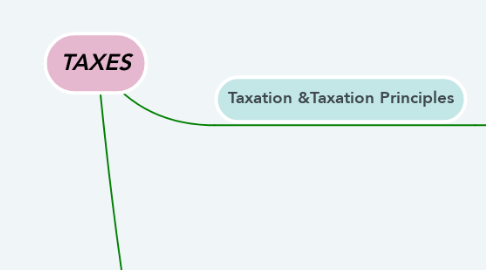
1. Taxation &Taxation Principles
1.1. A tax (from the Latin taxo - "rate") is a financial charge or other levy imposed upon a taxpayer (an individual or legal entity) by a state or the functional equivalent of a state to fund various public expenditures.
1.2. Some taxes will always be needed, so we want to make them as fair and as effective as possible. To do so, taxes must meet three criteria: equity, simplicity, and efficiency.
1.2.1. The first criterion is equity, or fairness, which means that taxes should be impartial and just.
1.2.2. A second criterion is simplicity. Tax laws should be written so that both taxpayers and tax collectors can understand them.
1.2.3. A third criterion for an effective tax is efficiency. A tax should be relatively easy to administer and reasonably successful at generating enough revenue while not harming the economy.
2. Types of Taxes
2.1. The most fundamental classification of taxes is based on who collects the taxes from the tax payer. Taxes can be either direct or indirect.
2.1.1. Indirect taxes are levied on the production or sale of goods and services. They are included in the price paid by the final purchaser. An indirect tax is imposed on one person but partly or wholly paid by another.
2.1.2. Direct Taxes, as the name suggests, are taxes that are directly paid to the government by the taxpayer– usually through “pay as you earn”. It is a tax applied on individuals and organizations directly by the government .
2.2. There are three categories into which we can place direct and indirect taxes: proportional, progressive, and regressive.
2.2.1. Progressive taxes. The more money individuals make the higher percentage of their income they have to pay.
2.2.2. Regressive taxes. A tax that takes a larger percentage from low-income people than from high-income people. The less money individuals make the higher percentage of their income they have to pay.
2.2.3. Proportional Tax / Flat taxes. In between is a proportional tax, where the effective tax rate is fixed, while the amount to which the rate is applied increases.
